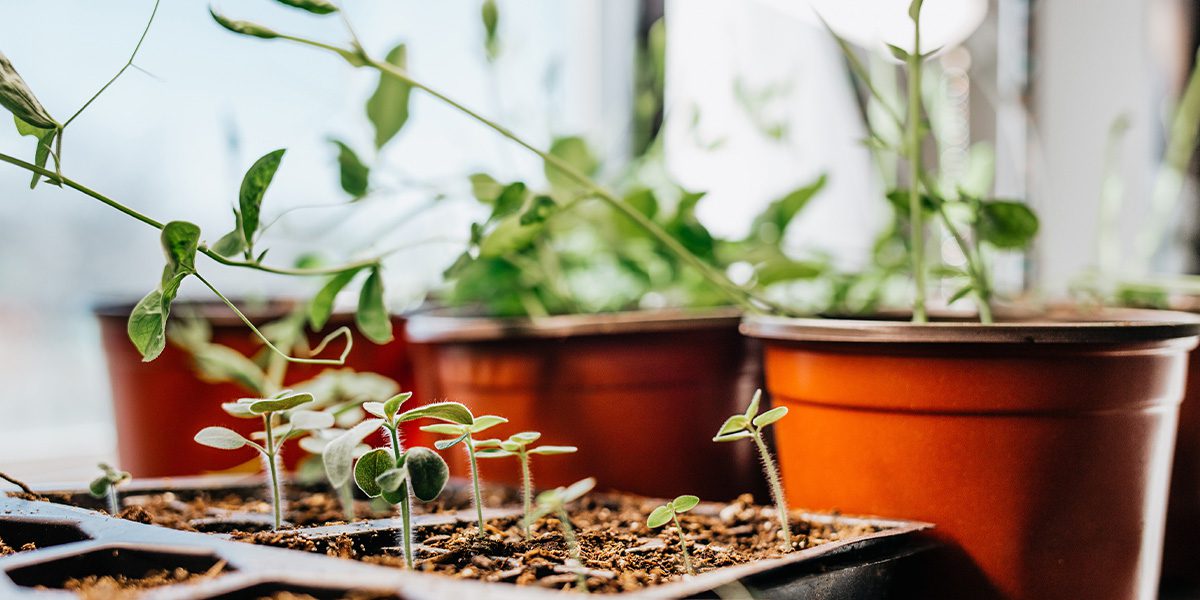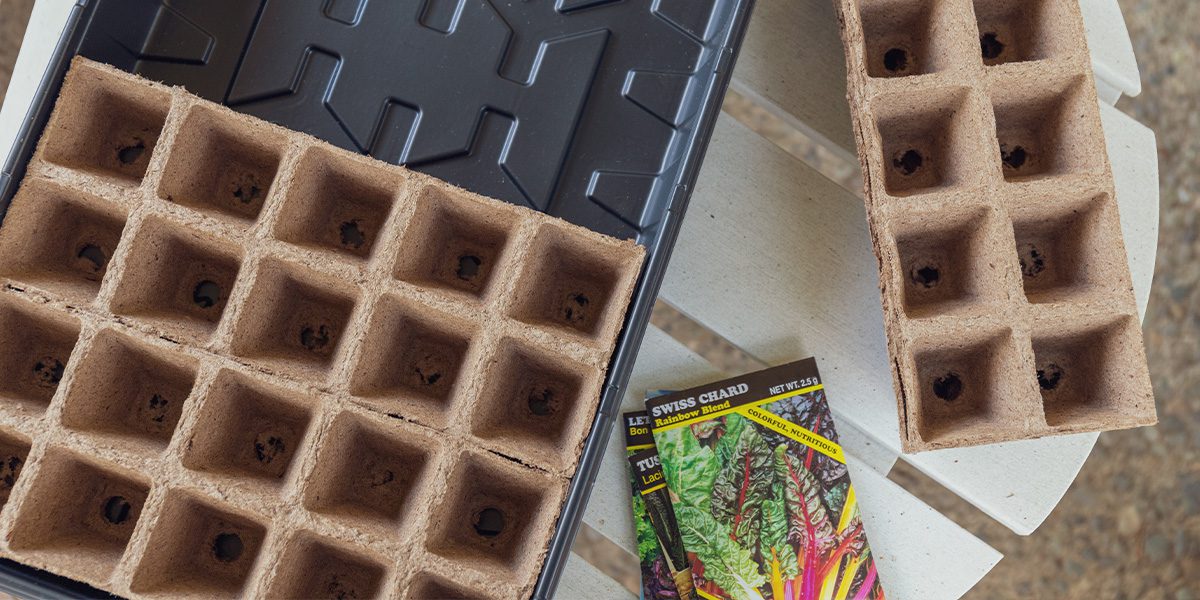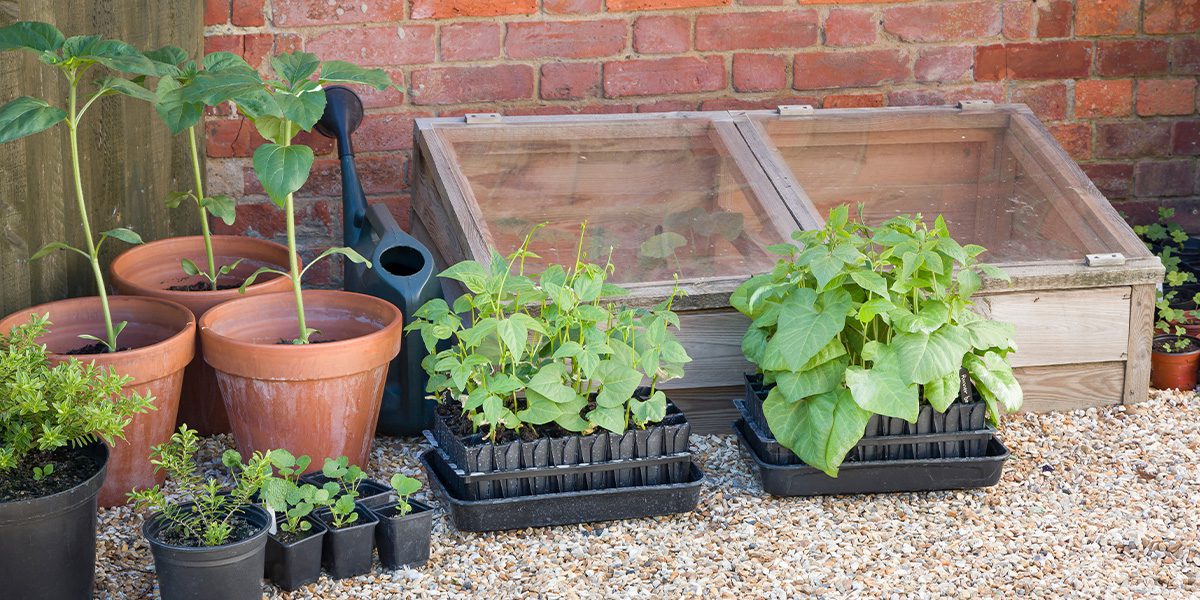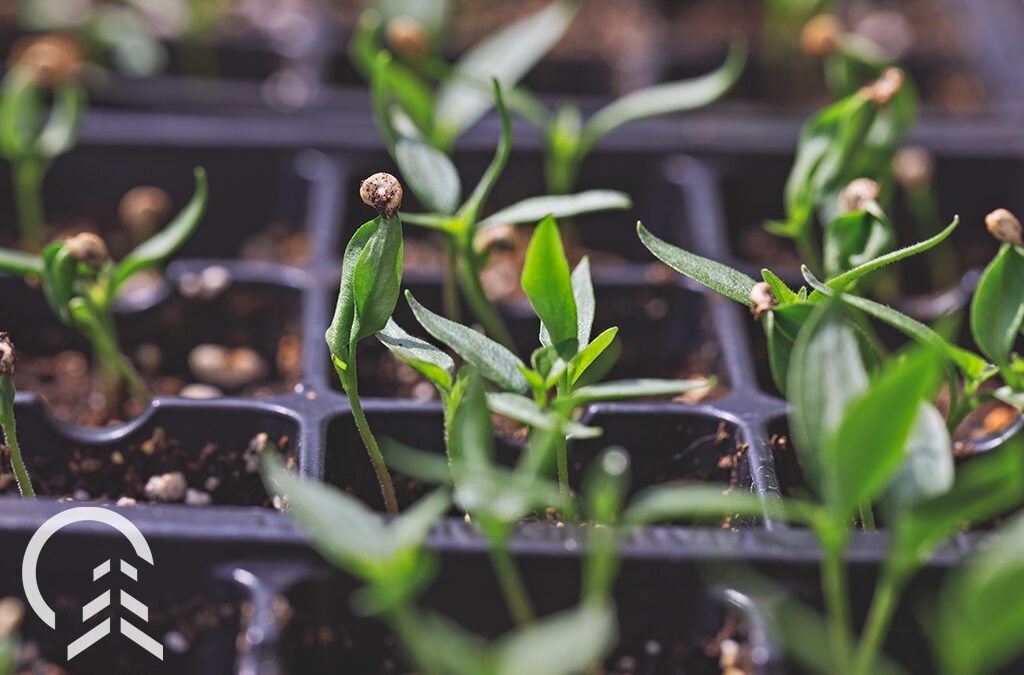The time for starting vegetable seeds indoors has arrived! If this isn’t part of your gardening practice, it’s time to start reaping the benefits. Not only does seed starting give you a sooner and longer harvest, but it also gives an essential headstart to all the crops that need a longer time to mature, like tomatoes and peppers. If you’re feeling daunted, don’t worry, seed starting is an easy task for any gardener to master—here’s how!
What Month Do You Start Seeds Indoors?
The time for starting seeds begins about 6-10 weeks before your last frost date. For Chicagoland, that means it’s time to begin starting seeds at the end of February and early March. Each plant has an ideal time it needs to grow inside. It’s always good to give your plants as much of a head start as possible, but not too much that their early growth gets stunted by the small tray.

Which Vegetables Do You Start Indoors?
Many warm-season crops, like tomatoes, peppers, and pumpkins, need a long growing season and are frost-sensitive. It helps to give them a jump on the season indoors to avoid the uncertain weather of early spring and ensure they have enough time to mature. Some cool-season crops—like cabbage, broccoli, and Brussels sprouts—also need several months to yield a harvest. Starting them inside gives you a taste of these delicious crops much sooner!
Some people also start greens indoors, like kale, Swiss chard, and lettuce. As fast-growing crops, they don’t need a longer growing season, but if you start them indoors, you’ll save on the grocery bill and enjoy fresh produce much sooner in the spring.

What Materials Do You Need to Start Seeds Indoors?
A seed starting tray, soil, and seeds are the key materials for starting your seeds indoors. Besides that, you also need water and a bright, sunny window. To boost your success, don’t use regular soil from the garden, as it contains pathogens and is too dense. Instead, use potting soil or a blend of seed-starting soil that is made for the purpose.
A Step-By-Step Guide for Starting Seeds
- Fill your starter tray with soil, either fresh potting mix or seed starting soil.
- Plant the seeds in the trays. Feel free to add more than one seed per compartment.
- Place them in a warm spot near a bright, sunny window.
- Water them, and continue watering daily. Soil must be moist, not soggy.
- Thin out any crowded seeds by cutting back the weaker ones.
- Begin hardening them off 1-2 weeks before planting.
- Transplant them into the garden.

What Does It Mean to Harden Off Seedlings?
Whenever you’re moving plants from indoors to outdoors, they need time to adjust to the bright sun, wind, and differences in temperature. This period is called hardening off. You do it by exposing your plants to the outdoors gradually.
On the first day, bring them outside for two hours in the shade. The following day, bring them out for a few hours into the dappled shade. On day three, you can bring them into the sun. Each day after that, expose them to a few more hours of sunlight each day. After they’ve built up to at least 8 hours in the sun, they’re ready to be moved into the garden!
A Calendar for Timing Seed Starts and Transplants
Here’s an approximate schedule for starting seeds based on the last frost date of May 15th in our area. Depending on where you live, your last frost date may come sooner or later. Double-check your local dates and adjust your schedule accordingly. As you’ll notice below, many cool-season crops can be transplanted before the last frost date.
|
Vegetable Seed Starting Time Basil Bell Peppers Broccoli Cabbage Celery Cucumbers Kale Lettuce Oregano Pumpkins Swiss Chard Tomatoes |
Seed Starting Time Mar 19 – Apr 3 Mar 5 – Mar 19 Mar 19 – Apr 3 Mar 19 – Apr 3 Mar 5 – Mar 19 Apr 17 – 24 Mar 19 – Apr 3 Apr 3 – 17 Mar 5 – Apr 3 Apr 24 – May 8 Mar 27 – Apr 17 Mar 19 – Apr 3 |
Transplanting Time May 15 – Jun 5 May 22 – Jun 5 April 17 – May 8 April 17 – May 3 May 22 – Jun 5 Apr 29 – Jun 12 Apr 17 – May 8 May 1 – 29 May 15 – Jun 5 May 29 – Jun 12 Apr 24 – May 1 May 22 – Jun 12 |
With food prices going up, horticultura is looking more attractive than ever. Starting seeds indoors is one sure way to save money, improve your family’s health, and enjoy the kind of mouth-watering produce that can only come from your garden.
For more supplies, gardening tips, and advice on starting seeds indoors, swing by our garden centers in Bloomingdale and Carpentersville!


